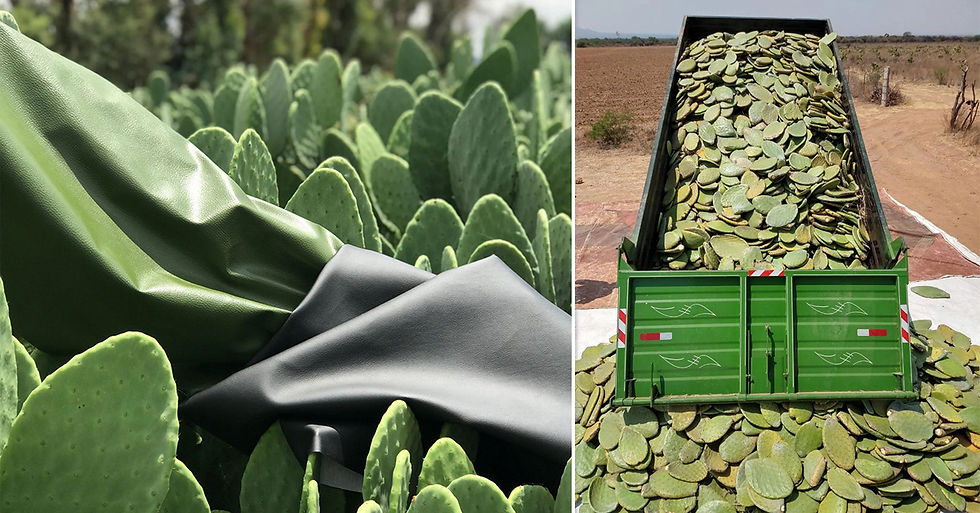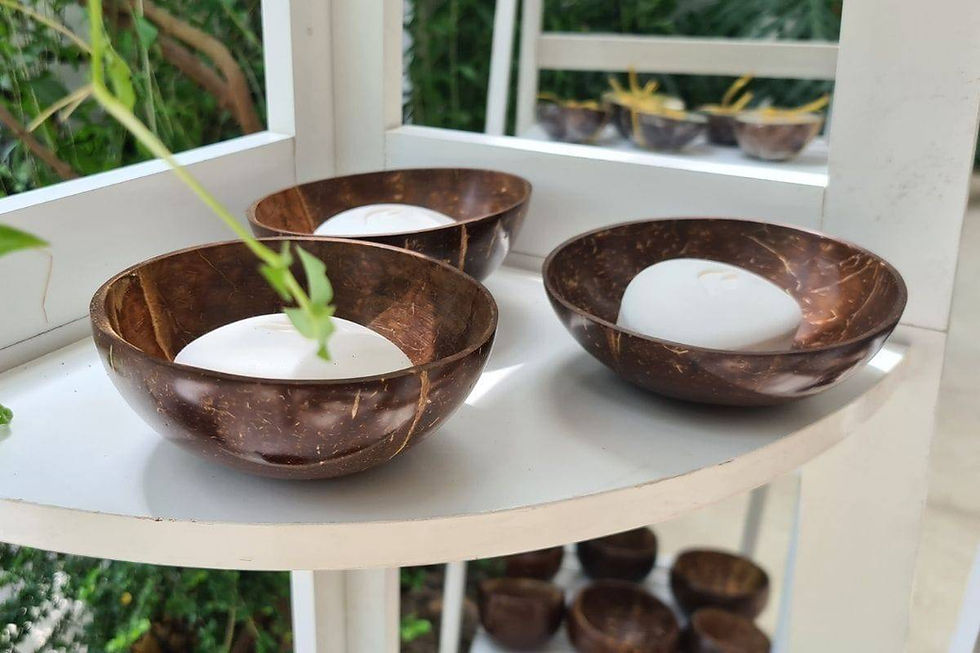Cactus Leather: The Spiky Star of Sustainable Style 🌵
- Bonita Labuschagne
- Aug 4
- 3 min read
Let’s get prickly—because cactus leather is having a serious moment in the world of eco-friendly alternatives.
If you thought the humble cactus was just a sun-loving, low-maintenance houseplant, think again. This desert dweller is now being transformed into vegan leather—and it's surprisingly luxe, durable, and seriously good for the planet.
So... what exactly is cactus leather?
Cactus leather is made from the leaves of the nopal cactus (aka prickly pear), grown in the sun-soaked regions of Mexico. It’s harvested without harming the plant, which means the cactus continues to grow and absorb carbon while the leaves get a second life as leather. Talk about a win-win.

Why is it sustainable?
Glad you asked. Here’s what makes cactus leather such a green gem:
Minimal water use (cacti are basically the camels of the plant world)
No toxic chemicals used in production (bye-bye, nasty tanning agents)
Biodegradable (well, mostly—much better than plastic-based faux leathers)
Cruelty-free (zero animals harmed = vegan approved!)
How long does it last?
Cactus leather is surprisingly durable. With proper care, it can last up to 10 years—and it doesn’t crack or wear down as quickly as some other plant-based leathers. It’s water-resistant, flexible, and just feels good. Like, really good.
What can you find in cactus leather? (Spoiler: more than you’d expect 🌵)
At Ecosource, we source beautifully crafted passport and travel wallets as well as journal notebooks made from cactus leather. They’re soft to the touch, seriously good-looking, and designed to go the distance—whether you're jet-setting across the globe or jotting down your next big idea.

But the cactus leather party doesn’t stop there.
This spiky superstar has also been spotted in:
Shoes and sneakers
Handbags and clutches
Belts and watch straps
Car interiors (yep, even the auto industry is getting on board!)
Phone cases
Furniture upholstery
Basically, if it’s traditionally made from leather, there’s probably a cactus version—just with fewer emissions and zero guilt.
It’s not just a trend—it’s the future of fashion, function, and feel-good design.
How is cactus leather actually made?
Cactus leather is created by harvesting mature cactus leaves (usually from the nopal or prickly pear variety), which are then cleaned, mashed, and sun-dried for about three days. Once dried, the fibrous material is mixed with non-toxic bio-based resins and shaped into soft, flexible sheets that look and feel like traditional leather.
The process is low impact, doesn’t require irrigation (hello, rainwater only!), and uses no harmful chemicals—making it one of the greenest leather alternatives out there.

Is cactus leather biodegradable?
Good question! 🌱
While not always 100% biodegradable—because it sometimes contains a small amount of bio-based or recycled PU (to boost durability)—cactus leather is far more eco-friendly than traditional leather or fully synthetic alternatives. It’s partially biodegradable, made without PVC or toxic chemicals, and created in a way that significantly reduces environmental harm.
What does it feel like?
Honestly? Luxe.
Cactus leather has a smooth, buttery finish that rivals animal leather, but it’s lighter and more breathable. It’s flexible, strong, and comes in a range of colours and textures. Whether you like a matte, grainy look or something sleek and polished, cactus leather delivers.
Who’s using it?
Major fashion brands, eco-conscious designers, and even car manufacturers are making the switch. Brands like Karl Lagerfeld, Fossil, and BMW have explored cactus leather for everything from handbags to car interiors.
So, is cactus leather the real deal?
We think so. It’s stylish, sustainable, and seriously versatile—a fresh alternative to traditional leather that doesn’t cost the Earth (literally). Whether you’re looking for your next go-to travel wallet or a journal that stands out for all the right reasons, cactus leather brings the cool factor and a conscience.


Comments